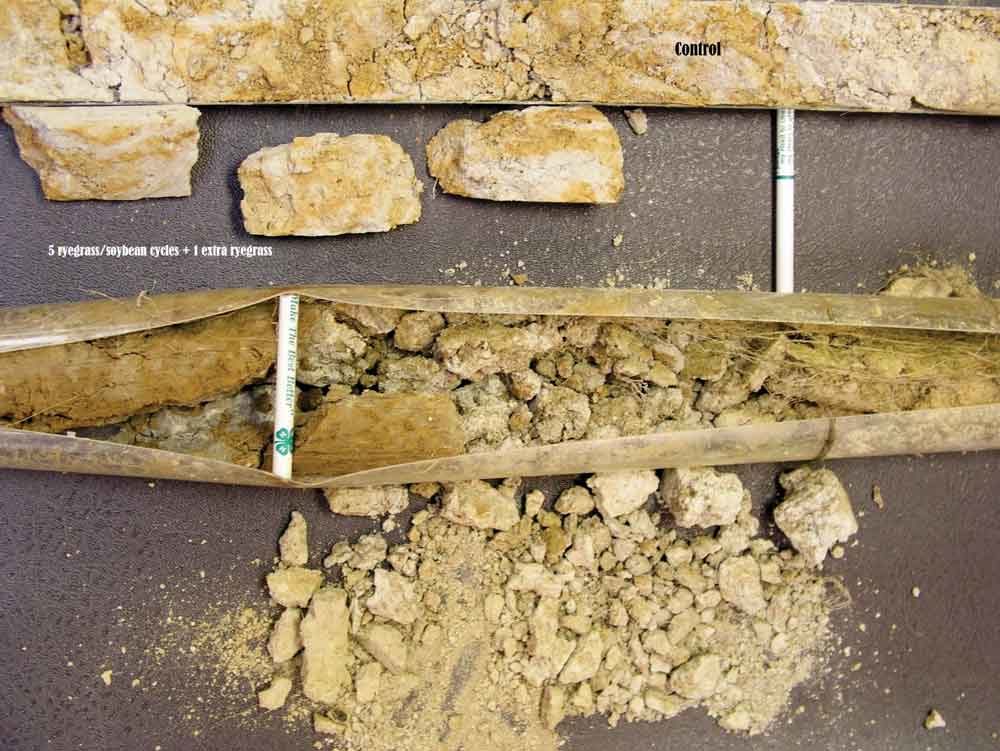No-Till Farmer
Get full access NOW to the most comprehensive, powerful and easy-to-use online resource for no-tillage practices. Just one good idea will pay for your subscription hundreds of times over.

AFFECTING ABOUT 50 million acres in the U.S., the fragipan is a naturally-occurring, cement-like soil layer that can reduce the water-holding potential of the soil by about 50% compared to other crop-producing soils, and can reduce crop yields by at least 20-25%.
According to Lloyd Murdock, soil specialist and professor emeritus at the University of Kentucky (UK), fragipans create a barrier that neither roots nor water can penetrate. The fragipan usually sits about 24 inches below the soil surface, leaving a shallow rooting area for crops. In addition, it creates wet field conditions in the spring, which makes planting difficult.
“In most places with a fragipan, evapotranspiration is less than precipitation from November to April. This makes the soil too wet and difficult to work with, reducing yields in summer crops,” he says.
Research done in the 1980s had shown that fragipans, which consist of hydroxy-aluminum silicate with some iron, were resistant to remediation. Mechanical disturbance was largely ineffective at breaking up the fragipan, though an application of organic matter (sawdust) in addition to disturbance helped somewhat.
Building on research done by the late University of Illinois educator Mike Plumer — who discovered that growing annual ryegrass as a cover crop could increase yields in the following row…